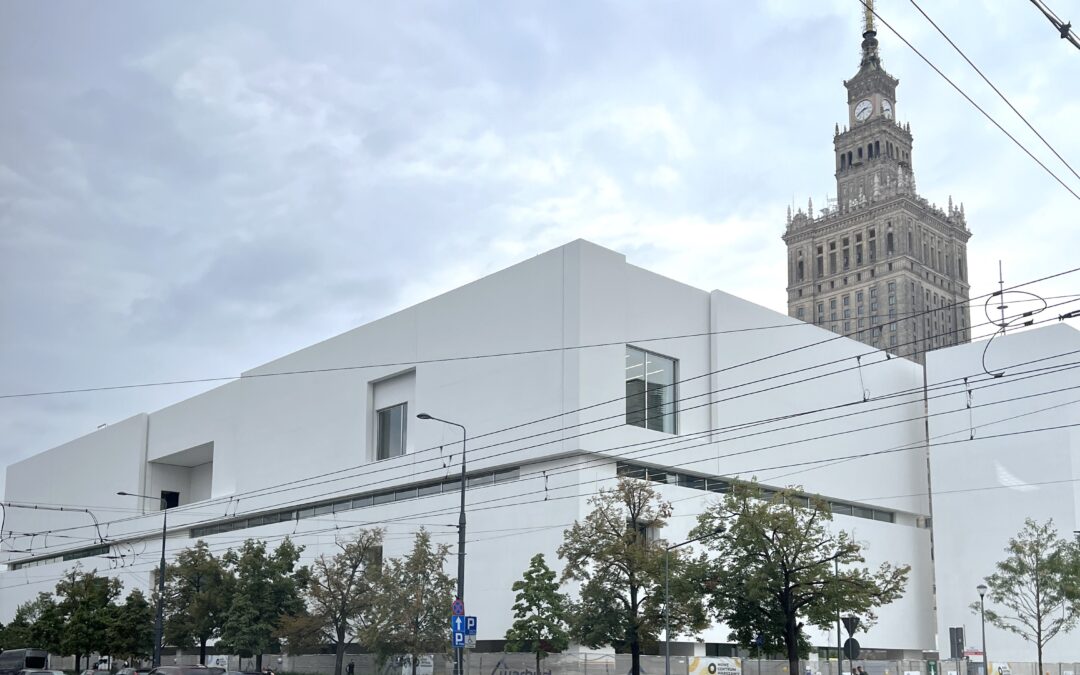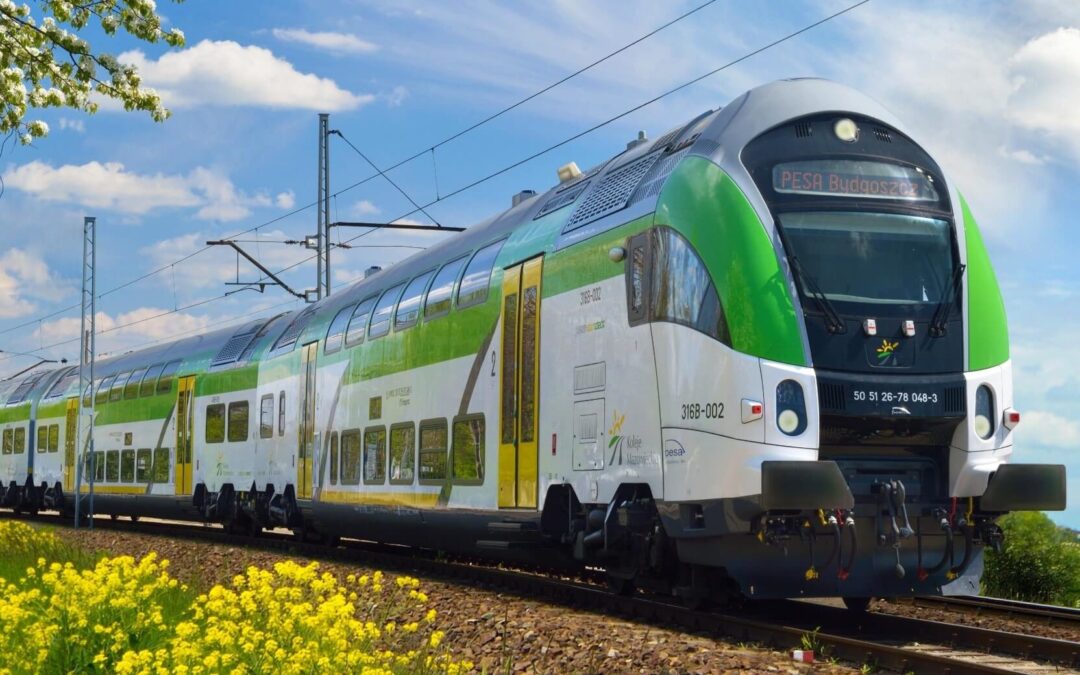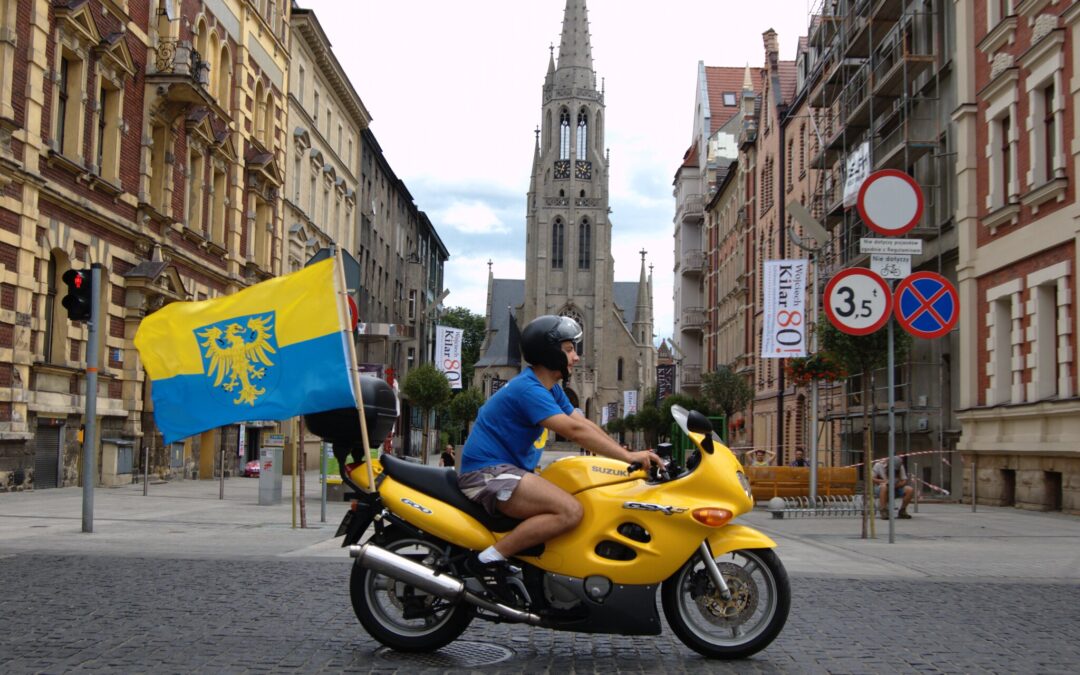Keep our news free from ads and paywalls by making a donation to support our work!

Notes from Poland is run by a small editorial team and is published by an independent, non-profit foundation that is funded through donations from our readers. We cannot do what we do without your support.
The Museum of Modern Art in Warsaw is opening its new permanent building today, with a series of over 100 free events, exhibitions and performances to follow over the next three weeks.
The museum has been functioning in temporary spaces for almost two decades, but now has a permanent home in a new building – one whose design and placement has not been universally popular – that sits alongside Warsaw’s Stalinist-era Palace of Culture and Science (PKiN).
“It’s a special moment – there hasn’t been such a place in Warsaw for decades,” says the city’s mayor, Rafał Trzaskowski.
Jutro otwarcie Muzeum Sztuki Nowoczesnej w Warszawie 👋 🥳 pic.twitter.com/nkVFLWop4h
— Anna Auksel-Sekutowicz (@AukselAnna) October 24, 2024
The new building has a total of 20,000 square metres of floor space spread across six levels – two of them underground – including 4,500 square metres of exhibition space as well as education and conservation rooms, art storage facilities, a cinema, auditorium, café and shop.
During tonight’s opening, the museum will display a selection of nine pieces created by female articles, including a composition by Magdalena Abakanowicz and a sculpture by Alina Szapocznikow.
“We were very keen to at least symbolically refer to the issue of parity, i.e. women’s access to visibility in art, which is why the first presentation in the museum will only feature works by women,” said the museum’s director, Joanna Mytkowska.
“In this way, we continue the worldwide trend of brushing up on forgotten and overlooked female artists,” she added.
A new exhibition at the @Tate Modern in London is devoted to Magdalena Abakanowicz, highlighting her status as one of Poland's most important artists.
Her "Abakans" – enormous, unsettling textile forms suspended from the ceiling – continue to fascinate https://t.co/wwUv6Pgiw8
— Notes from Poland 🇵🇱 (@notesfrompoland) December 21, 2022
The opening programme will last for three weeks, during which visitors will be able to see various performances, concerts, lectures and events for free.
Those include a review of the Polish choreographic scene of the last 10 years; the opening of the KINOMUZEUM, a cinema that will screen independent and experimental films; and an educational programme for primary school children.
The opening will also incorporate the 16th edition of the WARSAW UNDER CONSTRUCTION festival, entitled “Difficult Love: the Museum between the Square and the Palace” and focusing on the history of the Parade Square on which the museum is located and the surrounding area, including PKiN.
The location of the museum as well as its modern design have stirred controversy ever since the plans were first presented in 2019. The structure was designed by Thomas Phifer, an American architect famous for his designs of various art museums in the US.
But his vision of a large, white, perpendicular building made of concrete with no ornaments and only a few windows has been criticised for being unoriginal, out of keeping with its surroundings, as well as for obstructing the view of PKiN.
Warsaw mayor Rafał Trzaskowski alluded to such debates this week, saying that, “if you think this is the end of the controversy and the end of the discussion on modern art, I must surprise you…When you come and start looking at the collections in today’s polarised reality, that is when the discussion will only begin”.
He also warned that there might be some “who may want to censor or change some things” but declared that “there is no place for censorship and bans in Warsaw…Instead, there is place for discussion and an exchange of opinions”.
The long-awaited @MSN_Warszawa Museum of Modern Art in Warsaw will open today at 8 PM. It is located right in the heart of the city and is set to become one of its key cultural destinations. Check the schedule of opening events, including special exhibitions, live performances,… pic.twitter.com/KZmHbPOhg1
— Go2Warsaw (@Go2Warsaw) October 25, 2024
Before finding a permanent home in its current location, the museum operated from temporary locations – since at Wybrzeże Kościuszkowskie on the bank of the Vistula river and, before that, from 2008 at Pańska Street, close to PKiN.
In the 1990s, the museum’s first director, Anda Rottenberg, asked Frank Gehry – a legendary American architect with Polish-Jewish roots responsible for the Guggenheim Museum Bilbao in Spain – to design a building for it.
But even though Gehry agreed to do so for free, the idea did not find support among the authorities of the time. Another project for a permanent location was presented in 2010 by Swiss architect Christian Kerez but did not come to fruition due to a disagreement with the city authorities.

Notes from Poland is run by a small editorial team and published by an independent, non-profit foundation that is funded through donations from our readers. We cannot do what we do without your support.
Main image credit: Liu Nan/Wikimedia Commons (under CC BY-SA 4.0)

Agata Pyka is a former assistant editor at Notes from Poland. She specialises in Central and Eastern European affairs, cybersecurity, and investigative reporting. She holds a master’s degree in political communication from the University of Amsterdam, and her work has appeared in Euractiv, the Balkan Investigative Reporting Network (BIRN), and The European Correspondent, among others.



















